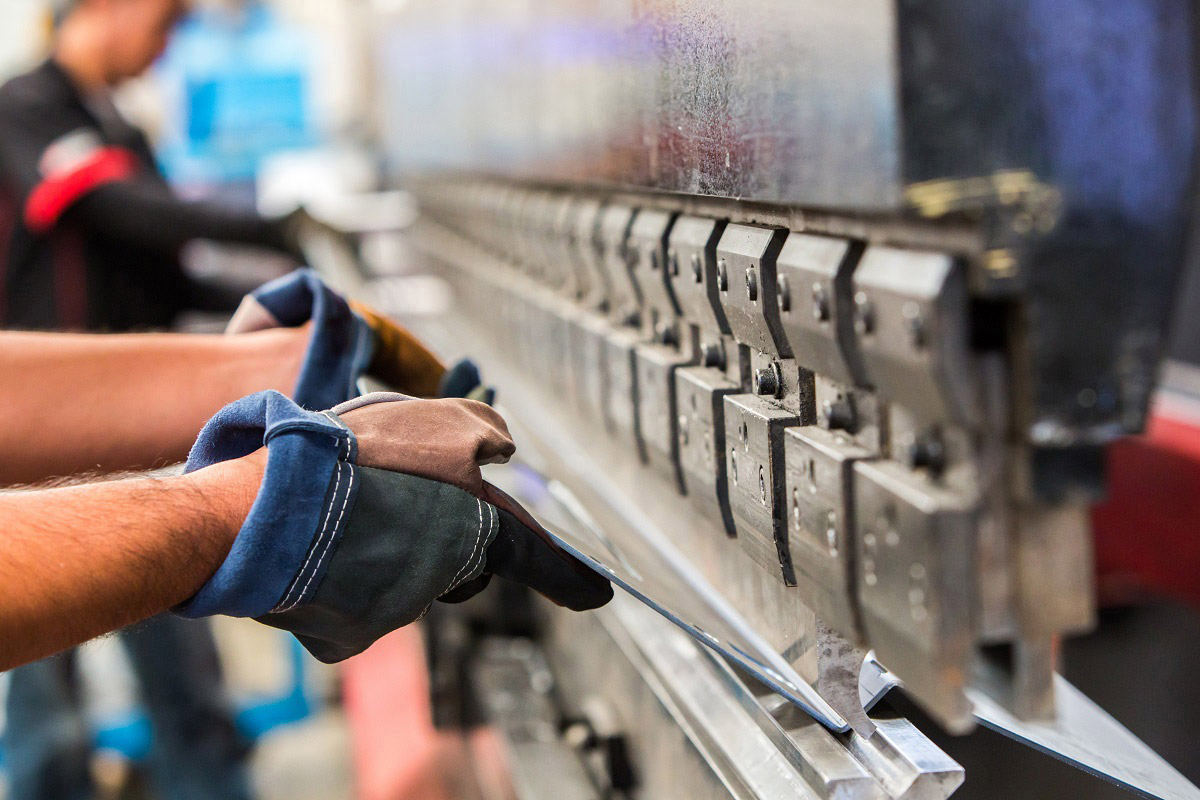Metal Stamping: Developments Driving Industry Growth
Metal Stamping: Developments Driving Industry Growth
Blog Article
Steel Stamping Advancements: Elevating Production Processes for Superior Results
In the realm of manufacturing procedures, steel stamping has actually long been a foundation method for generating a variety of precision parts. With the relentless march of technological innovation, the landscape of steel stamping is undergoing a significant change.
Evolution of Metal Marking Strategies

Additionally, innovations in material scientific research have actually resulted in the advancement of high-strength alloys that can currently be perfectly marked right into intricate shapes, accommodating a more comprehensive range of industrial applications. The combination of robotics and fabricated intelligence has additionally maximized the marking procedure by enhancing speed and accuracy while decreasing the threat of human mistake.

Effect of Advanced Products
Have innovative products changed metal stamping processes considerably in the manufacturing industry? The answer is a resounding yes (Metal Stamping). The integration of advanced materials has transformed metal marking, enabling producers to accomplish greater precision, increased efficiency, and enhanced item top quality. By using products such as high-strength alloys, progressed composites, and ingenious coatings, steel marking procedures can currently produce components that are lighter, more powerful, and much more resilient than in the past.
These sophisticated products provide superior mechanical properties, deterioration resistance, and thermal security, permitting manufacturers to meet the demands of contemporary markets such as aerospace, auto, and electronic devices. Additionally, making use of sophisticated products in steel marking has actually promoted the production of complex geometries and elaborate styles that were previously unattainable with standard approaches.
In addition, the execution of innovative materials has resulted in lowered product waste, reduced manufacturing prices, and much shorter lead times, making metal stamping procedures much more affordable and sustainable. As innovation remains to advancement, the influence of sophisticated products on steel stamping processes is expected to drive additional development and improve the competitiveness of manufacturers in the global market.
Automation in Steel Stamping
The evolution of metal stamping processes driven by the integration of sophisticated materials has set the stage for considerable improvements in automation within the production industry. Automation in metal marking has revolutionized manufacturing procedures, improving effectiveness, precision, and overall output quality. Through the application of robotics, sensors, and computer-controlled systems, jobs that were time-consuming and when manual can currently be carried out with unmatched speed and precision.
Automation in metal marking not only accelerates manufacturing rates however also makes certain consistency in the production procedure. By minimizing human intervention, the danger of errors is dramatically decreased, bring about higher degrees of product harmony and integrity. Furthermore, automation enables suppliers to embark on complex stamping jobs that would certainly be difficult or not practical to accomplish by hand.
Additionally, automation in steel stamping contributes to a more secure working environment by minimizing the need for employees to take part in harmful or recurring tasks - Metal Stamping. This shift in the direction of automation not just improves productivity yet likewise leads the way for the future of production, where innovation plays a central function in driving functional excellence
High Quality Control and Inspection Solutions
With a concentrate on accuracy and dependability, quality control and evaluation systems play a visit crucial duty in guaranteeing item quality in steel stamping procedures. These systems are created to monitor every stage of manufacturing, from product inspection to the last product, to ensure that all components meet the required requirements. By executing sophisticated innovations such as optical assessment systems, coordinate determining makers (CMM), and automated determining tools, suppliers can identify also the tiniest variances in measurements, surface quality, and general stability of stamped components.

Sustainability Practices in Steel Stamping
Building upon the structure of accuracy and integrity established through quality control and examination systems, the integration of lasting techniques in metal stamping procedures is significantly ending up being a focal factor for makers seeking to reduce environmental influence and maximize source usage. Sustainability practices in metal marking incorporate a variety of efforts intended at lowering waste generation, power intake, and greenhouse gas emissions throughout the manufacturing process.
One key element of sustainability in steel marking is the adoption of green materials and technologies that promote recyclability and waste reduction. By utilizing recycled materials and applying energy-efficient machinery, producers can lower their carbon impact and contribute to a more sustainable manufacturing cycle. In addition, optimizing manufacturing procedures to reduce material waste and energy usage not only benefits the setting yet also results in set you back financial savings for organizations in the lengthy next page run.
In addition, the execution of lasting techniques in steel stamping can improve brand track record and charm to ecologically mindful consumers. As sustainability remains to gain value in the production sector, incorporating green efforts right into steel stamping procedures is important for long-lasting success and competitiveness in the market.
Final Thought
To conclude, metal stamping strategies have dramatically developed gradually, including sophisticated products and automation to improve making processes. Quality assurance and assessment systems play an important role in making sure premium results, while sustainability practices are significantly being implemented to lower ecological effect. These advancements in steel marking have changed the sector, leading to much more effective and lasting manufacturing approaches for numerous sectors.
Metal stamping, once a guidebook and labor-intensive process, has actually changed into a very automated and sophisticated method of shaping steel sheets into different forms and layouts.Have sophisticated materials transformed metal stamping processes significantly in the manufacturing sector? By utilizing materials such as high-strength alloys, progressed compounds, and innovative layers, steel marking processes can now create parts that are lighter, more powerful, and much more long lasting than ever in the past.
The evolution of metal marking procedures driven by the combination of innovative materials has established the stage for considerable innovations in automation within the production industry.In verdict, metal marking methods have significantly progressed over time, incorporating innovative Recommended Reading materials and automation to boost manufacturing procedures.
Report this page